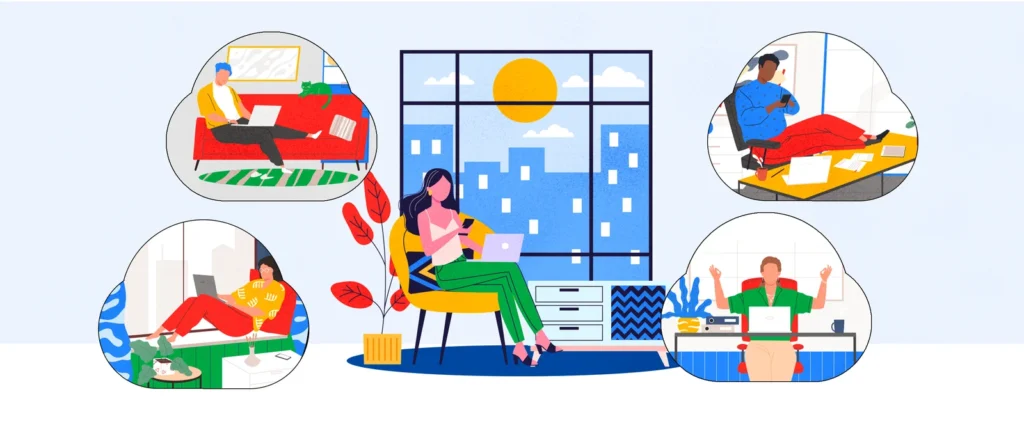Many of us rely on online conferencing tools daily. Platforms like Zoom, MS-Teams, Webex, and Google Meet have significantly transformed how we interact. The rapid advancements in this sector, with the introduction of new features, are indeed intersesting.
The A glimpse into the evolution of online conferencingEvolution of Google Meet
During the pandemic, the surge in work-from-home scenarios introduced many to the world of video conferencing. Even as some transition back to offices, the hybrid work model remains rooted in video conferencing, sometimes even within the same office space. The integration of large language models (LLMs) and diffusion models has paved the way for AI-enhanced features in these platforms.
What are Google doing?
Google Meet recently revealed a real-time note-taking feature. With a simple command, users can receive a summary and action points from ongoing meetings. If you’re late? Don’t worry; a mid-meeting recap is available. These summaries can be saved for future reference, with options to include significant video moments.
Another intriguing feature is the AI participant. Ever wished to be in two places simultaneously or perhaps skip a meeting? This feature allows an AI to represent you, generating talking points from your agenda. But what if everyone sends their AI to a meeting? It would be an interesting scenario, but that’s a topic for another newsletter.
The Evolution of AI in Online Conferencing: Beyond Google’s Innovations
While Google’s advancements in integrating AI into online conferencing have garnered significant attention, it’s essential to recognize that they are not the sole pioneers in this domain. Esteemed platforms such as MS-Teams, Webex, and Zoom are also making commendable strides in harnessing the power of AI to enhance user experiences.
However, the landscape of innovation doesn’t stop with these giants. Emerging third-party providers are carving a niche for themselves with specialized features that are pushing the boundaries of what’s possible. Companies like Otter, Firefly, and Sembly are at the forefront of these innovations. One of their most notable achievements is the ability to seamlessly transform presentation slides into comprehensive transcripts.
That said, pioneering new technologies often come with their set of challenges. One of the limitations is the understanding of multiple languages. But as they continue to refine their offerings and expand their capabilities, it’s only a matter of time before they set new standards in the realm of online conferencing. It’s an exciting era, and stakeholders in the industry would do well to monitor these developments closely.
Wrapping up, the landscape of video conferencing is advancing at a swift pace. Features introduced by third-party providers today may soon become standard in mainstream conferencing tools. As we gaze into the future, we can expect a boost of innovative features, potentially including AI-generated lifelike avatars. Can these avatars express emotions like a genuine frown? The potential is there, and the future will unveil the next big thing.
